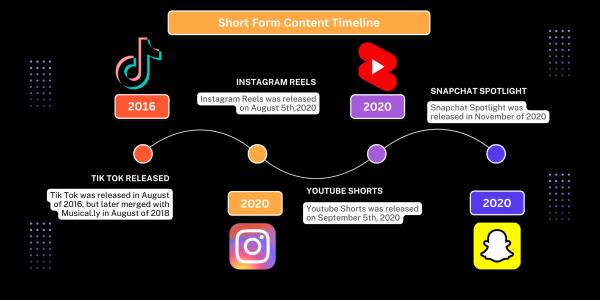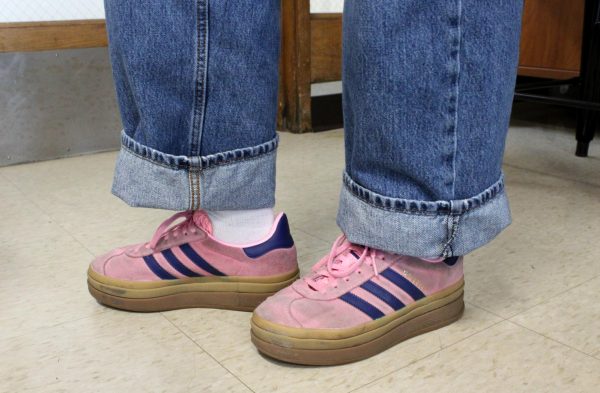Diversification or Specialization?
Approximately 35 million children between the ages of 5 and 18 participate in organized sports each year; 3.5 million of them receive medical treatment for sports-induced injuries, according to the University of California Davis. With concern growing about the increase in injuries, a debate has grown between athletes, parents, coaches and doctors on whether it is better for an athlete to specialize in one sport or to diversify their skills by competing in multiple sports.
Athlete’s Action
Sports specialization is defined as intense, year-round training in a single sport with the exclusion of other sports. The goal is to optimize the opportunities of developing athletic skills in one sport to enhance the chances of competing at a higher level. While some athletes are able to take part and excel in many sports, others have chosen to forfeit their multiple jerseys to solely focus on one.
Josh Steinhaus, a junior at LHS, was a two-sport athlete playing soccer and basketball up until sixth grade, when he decided to hang up his shin guards and cleats for good.
“I felt like I was kind of wasting my time playing soccer because I didn’t really enjoy it as much as basketball and I have goals for basketball. I want to play in college,” shared Steinhaus.
Influenced by his older brother’s similar decision, Steinhaus joined All-In Future Elite, an advanced basketball travel program that trains and competes all year.
Steinhaus described his fellow teammates in his travel program as “no one [being] just half on-board.” He believes “that specializing in one sport helps [the athletes with] their commitment” to not only the team, but to the sport as a whole.
A study published in 2013 by the National Center for Biotechnology Information exhibited that in high school athletes, there is a direct correlation between increased exposure and risk of injury, especially when training has exceeded 16 hours per week. Senior track runner Avryl Johnson has first-hand experience with this, as she suffered from overuse injuries in cross country and track her freshman year with shin splints.
Johnson decided to quit cross country in order to pursue her true passion of track; she specializes in the 800-meter and 400-meter races. Starting club track in the summer of 2014, she began pursuing her goal of running at a Division I college.
“It’s really nice with my club team (Track My Speed) because we travel to [colleges like] the University of Kentucky, Texas A&M, and all these other schools and we get to talk to the coaches,” explained Johnson. She stressed the fact that even though she travels long distances for their “nationally-ranked meets,” it is still worth it in the end.
By cutting cross country out of her schedule, Johnson is able to train year-round for track.
“My main focus is track and it means the world to me because it is my future, so I have just been open to such good experiences around the country training and competing,” she stated.
While LHS is filled with many talented one-sport athletes, it also has a large number of three-sport athletes like junior Madeline Spaulding. She plays volleyball, basketball and lacrosse.
For athletes who play three sports, there is limited time for a social life outside of athletics, so sometimes their teammates become their closest friends. Spaulding has experienced this, saying that “playing multiple sports has a lot of benefits because you can switch from team to team and you get to meet so many more people than if you were just on one team.”
Senior Max Kratcoski is also not a stranger to the three-sport life: “I like doing a variety [of sports], trying different things out every season instead of getting bored with [one sport], ” he said; Kratcoski is currently a part of cross country, swimming and water polo.
One of the main concerns of only focusing on one sport is that the athlete will lose their desire to play and burn out, but Kratcoski credits playing multiple sports for always having an interest in what he’s doing.
Coach’s Call
During the three-month season, the coaching staff of a sport becomes more than just figures with a whistle. In some ways, they become an athlete’s parents, as they spend hours with the team every day, overseeing the training, helping with individual and team development and, most importantly, looking out for their best interest. That includes being supportive of the athlete’s choices and advocating for injury prevention.
As the varsity girls basketball and golf coaches, Mr. Greg Pedersen understands the many pros and cons of playing multiple sports.
“There is good and bad to focusing on the one sport because you do get extra time to train in your chosen sport, but you’re missing out on some unique experiences that high school has to offer,” stated Mr. Pedersen.
Another coach in support of having two types of athletes on a team is Mrs. Jenny Smith, the assistant varsity coach for girls volleyball and the head varsity coach for boys volleyball. When talking about the boys team last spring to the Daily Herald, she discussed how “we have the kids that have outstanding volleyball IQ, but we also have the (multi-sport) athletes that have a vast array of coaching philosophies that they deal with, and they give that to us.”
Both coaches discussed how it’s important for their athletes to stay in shape and continue training no matter what sport it is. This helps prevent injuries as the players are constantly using their muscles and getting stronger, ultimately making them better athletes overall.
Doctor’s Prescription
On the sidelines of almost every LHS sporting event are not only the coaches yelling plays, but the trainers and doctors patiently waiting, hoping they don’t have to help a player in distress. Working day in and day out with the athletes, the medical staff has seen, treated and tried to prevent it all.
Ms. Sarah Pettit, an assistant athletic trainer at LHS, has not only noticed a trend in injuries, but also believes it to be related to the number of sports an athlete plays.
“I actually have seen more kids less injured when they do multiple sports, just because as a multi-sport athlete, you end up…activating more muscles when you’re working [out],” stated Pettit.
An orthopedic surgeon specializing in sports medicine at Greenleaf Orthopedics in Libertyville and a member of the LHS team physicians, Dr. Mark Smyth has noticed an increase in the overuse injuries with high school athletes, some of which used to only be seen in professional sports leagues.
He sees athletes suffering from “these specialized injuries that have to do with [a particular] motion” and suggests that there are certain sports more prone to the repetition of the same movements, such as baseball, volleyball, and swimming.
“I think [playing sports] is important for socialization, for motor development, and if you start young and play multiple sports, that just opens doors for you later if you want to continue playing one sport,” shared Dr. Smyth.






![Senior River Thompson joins the Jazz Ensemble by singing “That Old Black Magic” by Mercer and Arlen Arr. Mark Taylor, along with senior Annie Brody on guitar and junior Thomas Teixeira on bass, earning big applause. “[The concert had] great energy because it's the last [jazz concert] of the year,” Brody said.](https://www.lhsdoi.com/wp-content/uploads/2025/04/Eight-That-Old-Black-Magic-600x400.jpg)
![Mr. Abullh Ali, manager/assistant, helps open Queen Yemeni Coffee in downtown Libertyville at 606 North Milwaukee Ave. With the help of employees such as manager and LHS senior Yousef Taha, they are able to bring the Yemeni and Ethiopian culture to Libertyville by using their Queen spices, cinnamon and cardamom in their drinks such as Adani Chai, which is inspired by Sheda, the Queen of Yemen and Ethiopia. “The history of our coffee [is] a long history and we believe that Yemen and Ethiopia started the coffee and we are bringing something unique to the community,” Mr. Ali said.](https://www.lhsdoi.com/wp-content/uploads/2025/04/Photo-1-600x400.jpg)


